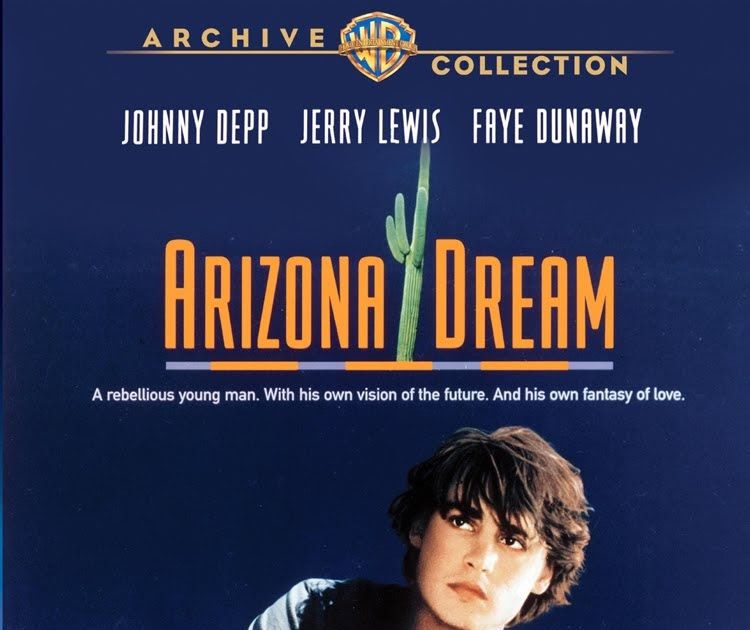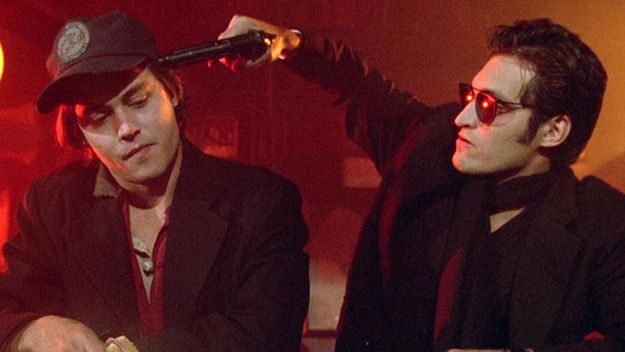A Critic's Meta-Review: 4/5

Arizona Dream (REVIEW)
Thinking about what to do made me more tired than the actual doing.
Thus goes the story of my life.
But seriously, folks.
This was by far one of the strangest movies I have ever seen. It was sort of like the cinematic equivalent of a Tom Robbins novel. This, of course, makes perfect sense, as the person who recommended it to me was also the same individual who brought Mr. Robbins to my attention: that delightful daredevil from the oft-unsung paradise that is the Pacific Northwestern United States, who had just finagled his way down from Vancouver to Medellin, with intentions of continuing his trek until his bike tires tread the last stretch of inhabitable land on Planet Earth (unless he had connections with one of those research teams down in Antarctica, in which case - god damn, he really is the most interesting cat I have ever come across).
The film begins with the same pieces it ends with - the red balloon, the fish, the Eskimos; however, unless you are some sort of movie dork, you probably did not take notice of any of this stuff. For all intents and purposes, the film begins when Johnny Depp’s character - Axel Blackmar, a fish-tagging bureaucrat working for the Department of Fish and Game in the Big Apple - wakes up in the back of a junk-filled boat and says, “Good morning, Columbus”. He then goes on to explain that this is a line his mother would often use to remind him that, by the time Christopher Columbus had arrived in “America”, it was already fairly well populated.
A clever line, I must admit - quite poignant, as a matter of fact. But I much prefer the quip he attributes to his father towards the end of the film, that work is “like a hat you put on your head; even if you don’t have pants, you don’t have to walk down the street being ashamed of your ass...because you [have] a hat”.
Amen, elder Blackmar. Words to live by.
Anyhoo.
With all its talk of snow and Eskimos, as well as the pervasiveness of fish (more on this later), this movie should have been called “Alaska Dream” or “The Floating Fish”. Speaking of Eskimos, it sounds like they have a lot in common with my people - at least in terms of their beliefs. That is if Axel’s description of their beliefs—what, with that whole “eternal soul” business—are to be believed. He could have just been trying to sweet-talk the girl he was telling it to to get laid (why he felt the need to do this, I am not sure—he is Johnny Depp, after all).
Speaking of girls, this leads me to perhaps the most interesting layer of the film—the two women that Axel encounters while staying in Arizona with his cousin, Paul. Each has a personality more perplexing than the last. While one of them—the mother, played brilliantly by the legendary Faye Dunaway, who even now at seventy-nine could still take me out to iced tea and a tennis match any day of the week, if you know what I mean—is rather charming, the other—played by the also talented although perhaps not as conventionally attractive Lili Taylor, of Mystic Pizza fame (if you have not seen Mystic Pizza, by the way, I highly recommend it—particularly if you are a fan of Matt Damon, as it is the first film in which he is featured)—is quite unpleasant, constantly chiding her contraparte mas simpatica and cutting off her enthralling stories of Papua New Guinea. So unpleasant is this character, in fact, that even her attempt at suicide is devoid of any and all tact, with the whole house damn near falling apart in the process. I thought that chandelier would knock poor Vince Gallo’s head right off like the Red Queen.
Good grief, mate.
Hell of an accordion player, though. I will give her that much.
She also delivers one of the film’s best lines, during the scene in which everyone talks about how they would like to die. Each of them describes some hyperbolic fictitious fantasy scenario that satisfies all of their tawdry proclivities, all of it so over the top that Grace sounds like the only reasonable one of the bunch when she simply states, “I’m not gonna die; I’m gonna live forever until one day I wake up, and then I’ll be a turtle”.
Same here, sis. And I am sure that, when it finally happens, Paul will be cooped up in a cafe somewhere in Bisbee quoting Boxcar Bertha or telling people about the etymology of the term “mise en scene”.
The director of this film - Emir Kusturica, a Serbian bloke - is evidently a fan of Alfred Hitchcock; indeed, he shows his affection for the tubby thrill-inducing icon in more ways than Paul’s copious references to North By Northwest; this film contains not one, but two prominent Maguffins: the fish, and the red balloon. Both of these items appear at the movie's beginning and then again at the end. The significance behind neither of them is explained - unless you can understand what Eskimo Uncle Leo says to Axel at the end.
So I guess it’s just an English Maguffin, then.
An English Maguffin. That sounds absolutely scrumptious.
There’s another one for my movie-themed dinner.
Anyhoo.
One of the characters (which one exactly, I cannot remember, as even though I literally just finished watching this film, it has all sort of blended together like a fever dream) alludes to the concept of “Chekhov’s gun” - a famous adage coined by the Russian writer Anton Chekhov which states that, if a gun is shown at the beginning of a movie, it will go off at some point before the end of the movie. I think, in the case of this film, it should be amended to “Chekhov’s fish”, and it should refer to the idea that if a fish is shown at the beginning of a movie, it is bound to be carved up by two characters in a dream at some point before the end of the movie.
Who knows? It could catch on.

